Difference between revisions of "Yak leather"
m |
|||
| Line 10: | Line 10: | ||
| − | The [[leather]] of the yaks, an Asiatic highland bovine, is mainly used in | + | The [[leather]] of the yaks, an Asiatic highland bovine, is mainly used in [[leather shoes|shoe]] and [[leather boots|boot]] production, but also for [[leather saddle|horse saddles]], [[leather belt|belts]] and [[leather bag|bags]]. |
Of a total of about 15 million yaks worldwide, around 85% live in Tibet, China and Mongolia. The rest are spread over India, Bhutan, Nepal and Kyrgyzstan (as of 2007). These are kept as domestic animals. Another 50,000 wild-living yaks are found in Tibet, where they are kept under strict protection. | Of a total of about 15 million yaks worldwide, around 85% live in Tibet, China and Mongolia. The rest are spread over India, Bhutan, Nepal and Kyrgyzstan (as of 2007). These are kept as domestic animals. Another 50,000 wild-living yaks are found in Tibet, where they are kept under strict protection. | ||
| Line 22: | Line 22: | ||
</p> | </p> | ||
<p align=center> | <p align=center> | ||
| − | ''Traditional | + | ''Traditional yak [[leather shoes]] and a duster from the tail of the yak from the 18th century in Tibet.<br></p> |
<p> </p> | <p> </p> | ||
| Line 31: | Line 31: | ||
The main export country for yak leather is China. The hides either come from slaughterhouses or directly from the nomads. | The main export country for yak leather is China. The hides either come from slaughterhouses or directly from the nomads. | ||
| − | The skin of a yak is about 2.5 to 4 [[Measures and weights|square | + | The skin of a yak is about 2.5 to 4 [[Measures and weights|square metres long]]. A cattle skin is about 5 square meters in comparison. |
| Line 46: | Line 46: | ||
</p> | </p> | ||
<p align=center> | <p align=center> | ||
| − | ''Yak leather [[Leather shoes|shoe]]. - A [[leather furniture| | + | ''Yak leather [[Leather shoes|shoe]]. - A [[leather furniture|yak leather armchair]] for 2,400 Euro (2009).<br></p> |
<p> </p> | <p> </p> | ||
| Line 52: | Line 52: | ||
<br> | <br> | ||
<p align=center> | <p align=center> | ||
| − | <flashow> | + | <flashow>//www.youtube.com/v/JjPr6dqvKDc&fs=1&color1=0x660000&color2=0x550000&border=1|width=500|height=281,25</flashow> |
</p> | </p> | ||
<p align=center> | <p align=center> | ||
Revision as of 06:48, 28 April 2017
The leather of the yaks, an Asiatic highland bovine, is mainly used in shoe and boot production, but also for horse saddles, belts and bags.
Of a total of about 15 million yaks worldwide, around 85% live in Tibet, China and Mongolia. The rest are spread over India, Bhutan, Nepal and Kyrgyzstan (as of 2007). These are kept as domestic animals. Another 50,000 wild-living yaks are found in Tibet, where they are kept under strict protection.
The former Tibetan nomads had been processing the skins traditionally into clothing, belts, lassos for boat manufacturing and many other things.
Traditional yak leather shoes and a duster from the tail of the yak from the 18th century in Tibet.
Due to the adverse living conditions of the animals in Tibet (cold, wind, snow), yak leather is denser in the fibre structure than typical cow leather. Therefore, yak leather requires only half of the thickness to achieve the same heat insulation and toughness of bovine leather. Nevertheless, the processing of yak leather is not easy, since the yak has extensive grease deposits in the depths of the skin which help the animal survive in the low temperatures of the Himalayas. However, this is a rather undesirable condition for the leather quality, since the skin becomes uneven and fibrous in deeper layers. This results in higher production costs, which is reflected in the fact that good yak leather is not cheap leather.
The leather quality is also dependent on gender and age. With increasing age (as with cattle), the fibres become thicker and more coarse and uneven.
The main export country for yak leather is China. The hides either come from slaughterhouses or directly from the nomads.
The skin of a yak is about 2.5 to 4 square metres long. A cattle skin is about 5 square meters in comparison.
Typical yak leather: Scarred and uneven.
Yak leather shoe. - A yak leather armchair for 2,400 Euro (2009).
Video about leather of different animal species
Leather of different animal species - Exotic leather
Other exotic leather
- Alligator leather
- Alpaca fur
- Antelope leather
- Armadillo leather
- Bird leather
- Bull testicles
- Caiman leather
- Camel leather
- Carpincho leather
- Cat fur
- Chicken leather
- Crocodile leather
- Dog leather
- Donkey leather
- Elephant leather
- Fish leather: Eel, shark, salmon, moray eel, stingray and many others
- Frog leather - Toad leather
- Giraffe leather
- Hippo Leather
- Horsehide - Horse leather
- Kangaroo leather
- Llama Fur
- Lizard leather
- Ostrich leather
- Pangolin leather
- Peccary leather
- Rumen leather
- Sealskin leather
- Snakeskin
- Turtle skin
- Walrus leather
- Zebra hide







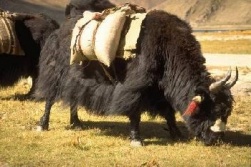
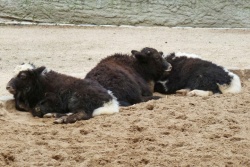
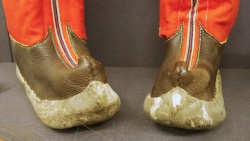
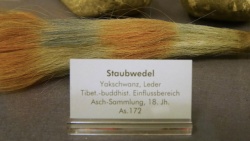
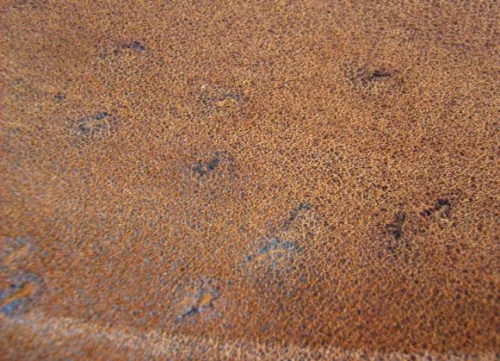
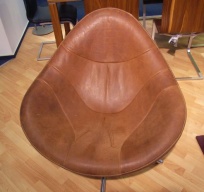

 a kotori web solution
a kotori web solution